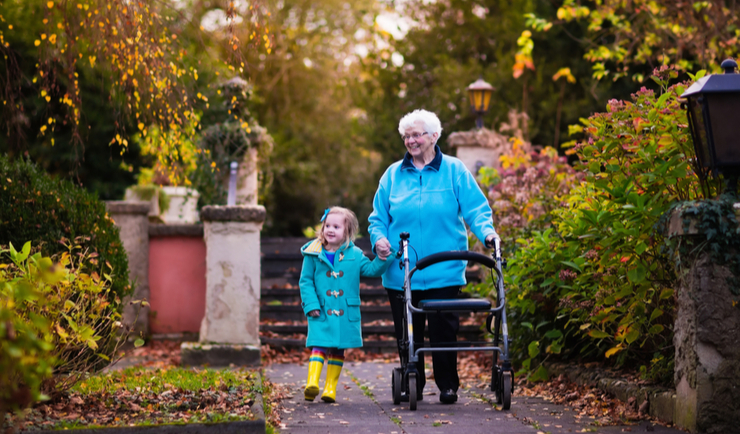Transit Has Important Role To Play for Seniors Who Want to Age In Place

It’s another feather in transit’s cap. Affordable, accessible transit is proven to increase mobility and a person’s satisfaction with their neighborhood among low-income seniors who want to remain in their homes.
The Aging in Place Project
In July 2019, the National Institute for Transportation and Communities held a webinar Aging In Place: Improving Mobility for Older Adults to share their recent study findings. The full study Life-Space Mobility and Aging in Place by The University of Utah and Portland State University researchers is available for download.
In this study, researchers conducted surveys and interviews with 50 lower-income adults from Portland, OR and Salt Lake County, UT. Participants were primarily White or Hispanic females in their mid-70s. The majority were homeowners who also used an assistive device.
What is Aging In Place?
Aging in place simply means that a senior can live and age in familiar surroundings. This is increasingly important as the North American population ages and more people want to stay in their homes. Eighty-eight percent of people said they want to remain at home. Many study participants desired to remain in their homes even if they become seriously ill – which poses serious issues related to mobility and access to health care.
The study participants wanted to age in place for a variety of reasons, including established social connections, having an accessible home/community and access to services.
How Do You Define Mobility?
- Public health researchers have a broad definition: relative ease and freedom of movement in all forms; the ability to meet the basic needs of access to goods, activities, services and social interactions; and generally having a high quality of life.
- This study found that mobility was purpose-driven and boiled down to how easy or difficult it was to reach the desired destination.
Benefits of Accessible Transit
According to the Aging in Place project, there was a notable difference in the quality of life and how seniors in the two cities got around.
Older adults in Salt Lake County relied heavily on the automobile, with only 28% using transit. Fifty-two percent of participants in Portland used transit and relied more heavily on mixed modes like light rail, bus and paratransit. Researchers found that Portlanders had more independence that those living in Salt Lake County, where they were more dependent on friends and family to give them a ride.
Overall, they found that transit users had better mobility, greater independence in daily activities and were more satisfied with their neighborhoods. Non-transit users’ answers about neighborhood amenities were more focused on their proximity to grocery stores, which the authors said could be interpreted as they had difficulty accessing amenities other than the necessities.
How to Increase Transit Use Among Older Adults
The top answers for each city on “What would make you ride public transportation more often?” differed widely:
- Portland: a tie between the top two answers: “if transit was easier to get on and off”, and “if transit went to more places I need to get to”.
- Salt Lake County: More widespread concern over issues of safety, cost, accessibility, and frequency.
The interviews found that some seniors had difficulty accessing some fixed route stops, even when they were close to their homes, and some people had never learned how to take public transportation.
Conclusion
The study found that transit increased mobility for seniors outside of the home, and was further aided when there were additional options like fixed route lines or paratransit services.

